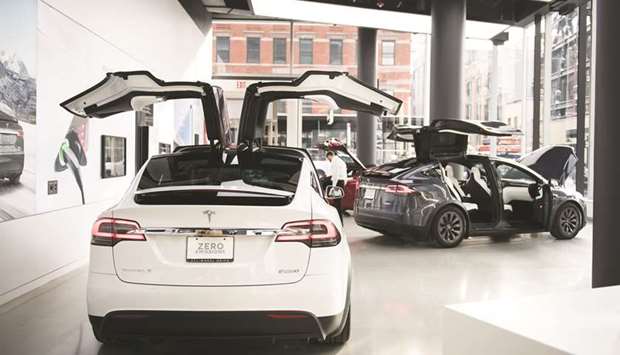US retail sales rebounded in March after three straight monthly declines as households boosted purchases of motor vehicles and other big-ticket items, suggesting consumer spending was heading into the second quarter with some momentum.
The Commerce Department said yesterday retail sales increased 0.6% last month after an unrevised 0.1% dip in February.
January data was revised to show sales falling 0.2% instead of the previously reported 0.1% drop.
Economists polled by Reuters had forecast retail sales rising 0.4% in March.
Retail sales in March increased 4.5% from a year ago.
“Consumers are doing their part to drive the economy forward as they restart their engines from a cold and snowy winter,” said Chris Rupkey, chief economist at MUFG in New York.
Excluding automobiles, gasoline, building materials and food services, retail sales rose 0.4% last month after being unchanged in February.
These so-called core retail sales correspond most closely with the consumer spending component of gross domestic product.
They were previously reported to have risen 0.1% in February.
Last month’s pick-up in core retail sales did little to change expectations of a sharp slowdown in consumer spending in the first quarter.
The dollar was trading weaker against a basket of currencies.
Prices for US Treasuries were marginally lower while stocks on Wall Street rose.
Economists largely blame the weakness in retail sales at the start of the year on delays in processing tax refunds.
Some also argue that income tax cuts, which came into effect in January, only reflected on most workers’ paychecks in late February.
Consumer spending, which accounts for more than two-thirds of US economic activity, grew at a robust 4.0% annualised rate in the fourth quarter.
It is expected to have slowed to below a 1.5% rate of increase in the first quarter.
Growth estimates for the January-March quarter are running below a 2% rate.
The economy expanded at a 2.9% pace in the October-December quarter.
Growth tends to slow in the first quarter because of a seasonal quirk.
The government will publish its advance estimate for first-quarter GDP growth later this month.
A robust labour market, which is expected to generate stronger wage growth, is expected to underpin consumer spending.
Low household savings, however, remain a constraint.
“The fundamentals are good,” said Gus Faucher, chief economist at PNC Financial in Pittsburgh. “However, the need for households to increase their saving will be a constraint on consumer spending growth in 2018.”
In March, auto sales jumped 2.0%, the largest increase since last September, after declining 1.3% in February.
Receipts at service stations fell 0.3%, reflecting cheaper gasoline.
Sales at furniture stores climbed 0.7% while those at electronics and appliance stores increased 0.5%. But sales at building material stores fell 0.6% last month.
Receipts at clothing stores dropped 0.8% while sales at online retailers increased 0.8%. Sales at restaurants and bars gained 0.4%. Receipts at sporting goods and hobby stores dropped 1.8%. In a second report yesterday, the Commerce Department said that business inventories rose 0.6% in February after a similar increase in January.
February’s increase in inventories, which are a key component of gross domestic product, was in line with economists’ expectations.
Retail inventories excluding autos, which go into the calculation of GDP, rose 0.2% after edging up 0.1% in January.
Economists expect inventory investment will contribute to growth in the first quarter after subtracting 0.53 percentage point from GDP growth in the October-December period.

A Tesla Model X P100D SUV on display at the company’s new showroom in New York. The US Commerce Department said yesterday retail sales increased 0.6% last month after an unrevised 0.1% dip in February, as households boosted purchases of motor vehicles and other big-ticket items.


